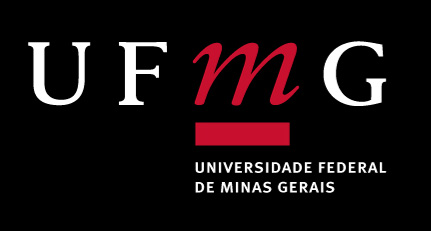Modelagem da dinâmica do desmatamento da Mata Atlântica usando regressão geograficamente ponderada
DOI:
https://doi.org/10.35699/2237-549X.2019.19890Keywords:
Desmatamento, Modelo econométrico, Regeneração florestal, Dinâmica da paisagem, Modelagem de mudança de uso da terraAbstract
Apesar da reconhecida importância ecológica e elevado grau de fragmentação, há poucos esforços para modelagem da dinâmica do desmatamento e regeneração da Mata Atlântica. Esse artigo contribui propondo uma abordagem econométrica para modelar a dinâmica da paisagem no bioma. Primeiramente foi executado um teste stepwise no software SPSS Statistics com uma seleção ad hoc do modelo mais relevante. Em seguida foi feito um teste para detecção de autocorrelação espacial no software Geoda e seus resultados foram comparados à uma regressão geograficamente ponderada executada no software ArcGIS com uma vizinhança de 25 municípios. Quantidade de remanescentes florestais, porcentagem de áreas protegidas, expansão de pastagem e expansão de florestas plantadas explicaram significativamente o desmatamento e regeneração no bioma. A regressão geograficamente ponderada melhorou o ajuste do modelo, indicou regiões em que o mesmo não teve uma performance satisfatória e onde as variáveis se mostraram mais ou menos significantes. O modelo pode ser usado como suporte para políticas de conservação e para a criação de cenários para simulações, permitindo uma avaliação das possíveis mudanças sobre as taxas de desmatamento e regeneração, geradas, por exemplo, pela força de mercado sobre a criação de gado e plantio de florestas, e as mudanças no Código Florestal.
Downloads
References
AITKIN, M. A general maximum likelihood analysis of overdispersion in generalized linear models. In: Statistics and Computing, v. 6, p. 251-262. 1996.
BAPTISTA, S. R. & RUDEL, T. K. . A re-emerging Atlantic forest? Urbanization, industrialization and the forest transition in Santa Catarina, southern Brazil. Environmental Conservation, v. 33, n. 3, p. 195-202. july. 2006.
BECKER, F. G., IRGANG, G. V., HASENACK, H., VILELLA, F. S. & VERANI, N. F. Land cover and conservation state of a region in the Southern limit of the Atlantic Forest (river Maquiné basin, Rio Grande do Sul, Brazil). Brazilian Journal of Biology, v. 64, n.3b, p. 569-582. august. 2004.
BRUNSDON, C., FOTHERINGHAM, A. S. & CHARLTON, M. Geographically weighted regression: A method for exploring spatial nonstationarity. Geographical Analysis, v. 28, p. 281–298. october. 1996.
CASETTI, E. Generating models by the expansion method: applications to geographic research. Geographic Analysis, v. 4, p. 81–91. january 1972.
DEAN, W. A ferro e fogo: a história e a devastação da Mata Atlântica brasileira. Companhia das Letras, p. 484. 1995.
DINDA, S. Environmental Kuznets Curve Hypothesis: a survey. Ecological Economics, v. 49. August 2004.
FOSTER, S. A. & GORR, W. L. An Adaptive Filter for Estimating Spatially Varying Parameters: Application to Modeling Police Hours Spent in Response to Calls for Service. Management Science, v. 32, p. 878-89. 1986.
FOTHERINGHAM A. S., CHARLTON M. & BRUNSDON C. Two Techniques for Exploring Non-Stationarity in Geographical Data. Geographical Systems. v. 4, p. 59-82. 1997.
FOTHERINGHAM, A. S., CHARLTON, M. E. & BRUNSDON. Geographically Weighted Regression: A Natural Evolution of the Expansion Method for Spatial Data Analysis. Environment and Planning, v. 30, p. 1905-1927. 1998.
FOTHERINGHAM, A. S., BRUNDSON, C., CHARLTON, M. Geographically weighted regression. West Sussex, UK.: John Wiley & Sons. 2002.
GOLDSTEIN, H. Multilevel Models in Educational and Social Research. London, UK.: Oxford University Press. 1987.
GORR, W. L. & OLLIGSCHLAEGER, A. M. Weighted Spatial Adaptive Filtering: Monte Carlo Studies and Application to Illicit Drug Market Modeling. Geographical Analysis, v. 26, p. 67-87. 1994.
HUANG, Y. & LEUNG, Y. Analysing regional industrialization in Jiangsu province using geographically weighted regression. Journal of Geographical Systems, v. 4, p. 233-249. 2002.
Instituto Brasileiro de Geografia e Estatística – IBGE. Censo Agropecuario 1995/96. Rio de Janeiro, Brazil: IBGE. 1998. Available in: http://www.ibge.gov.br. Accessed Jun 2011.
Instituto Brasileiro de Geografia e Estatística – IBGE. Censo Agropecuario 2006. Rio de Janeiro, Brazil: IBGE. 2006. Available in: http://www.ibge.gov.br. Accessed Jun 2011.
Instituto de Estudos Socioambientais do Sul da Bahia (IESB), Instituto de Geociências da Universidade Federal do Rio de Janeiro (IGEO/UFRJ), Departamento de Geografia da Universidade Federal Fluminense (UFF) Levantamento da Cobertura Vegetal Nativa do Bioma Mata Atlântica. Relatório final, Brasília, PROBIO 03/2004. 2007.
JAIMES, N. B. P., SENDRA J. B., Delgado M. G. & Plata R. F. Exploring the driving forces behind deforestation in the state of Mexico (Mexico) using geographically weighted regression. Applied Geography, v. 30 (4), p. 576-591. 2010.
JONES III J. P. & CASETTI E. Applications of the Expansion Method. London, UK.: Routledge. 1992.
KOOp, G. & TOLE, L. Is there an environmental Kuznets curve for deforestation?. Journal of Development Economics, v. 58, p. 231-244. 1999.
KRONKA, F. J. N, NALON, M. A., MATSUKUMA, C. K., KANASHIRO, M. M., YWANE, M. S. S., LIMA, L. M. P. R., GUILLAUMON, J. R., BARRADAS, A. M. F., PAVÃO, M., MANETTI, L. A. & BORGO, S. C. . Monitora mento da vegetação natural e do reflorestamento no Estado de São Paulo. Anais XII Simpósio Brasileiro de Sensoriamento Remoto, Goiânia, Brasil. p. 1569-1576. 2005.
LEUNG, Y., MEI, C. L., & ZHANG, W. X. Statistical tests for spatial nonstationarity based on the geographically weighted regression model. Environment and Planning, v. 32, p. 9-32. 2000.
LIRA, P. K., TAMBOSI R. L, EWERS R. M. & METZGER, J. P.. Land-use and land-cover change in Atlantic Forest landscapes. Forest Ecology and Management, v. 278, p. 80-89. 2012.
MYERS, N., MITTERMEIER, R. A., MITTERMEIER, C. G, FONSECA, G. A. B, & KENT, G. Biodiversity hotspots for conservation priorities. Nature, v. 403, p. 853-858. 2000.
PERZ, S. G. Grand-theory and context-specificity in the study of forest dynamics: forest transition theory and other directions. The Professional Geographer, v. 59(1), p. 105-114. 2007.
RIBEIRO, M. C., METZGER, J. P.,MARTENSEN, A. C.,PONZONI, F. J. & HIROTA, M. M. The Brazilian Atlantic Forest: How much is left, and how is the remaining forest distributed? Implications for conservation. Biological Conservation, v. 142(6), p. 1141-1153. 2009.
ROBERTSEN, C. (2011). Forest transition or just deforestation? Evidence from Brazil. MSc. Dissertation. Norwegian University of Life Sciences. Available in: < http://brage.bibsys.no/umb/bitstream/URN:NBN:no-bibsys_brage_29169/1/Master%20Thesis%20Catrin%20Robertsen.pdf > Accessed in: April 2012.
RODRIGUES, R. J. Da exploração à (Co)Operação Internacional (Alemã) para a Mata Atlântica: o subprograma PDA Mata Atlântica. 2008. MSc. Dissertation. Programa de Pós-Graduação em Geografia do Instituto de Geociências da Universidade Federal de Minas Gerais.
SONTER, L. J., BARRETT, D. J. & SOARES-FILHO, B. S. Offsetting the impacts of mining to achieve no-net-loss of native vegetation. Conservation Biology. 2014
SONTER, L. J., BARRETT, D. J., SOARES-FILHO, B. S. &. MORAN, C. J. The global demand for steel drives extensive land use change in Brazil. Global Environmental Change- Human and Policy dimensions. v. 26, p. 63-72. 2014.
SOS Mata Atlântica, Instituto Nacional de Pesquisas Espaciais Atlas da evolução dos remanescentes florestais da Mata Atlântica e ecossistemas associados no período de 1985 a 1990. 1993. Available in: < http://www.sosmatatlantica.org.br > Accessed in: June 2011.
SOS Mata Atlântica, Instituto Nacional de Pesquisas Espaciais Atlas dos remanescentes florestais e ecossistemas associados no domínio da Mata Atlântica. 2000. Available in: < http://www.sosmatatlantica.org.br > Accessed in: June 2011.
SOS Mata Atlântica, Instituto Nacional de Pesquisas Espaciais. Atlas dos remanescentes florestais da Mata Atlântica, período de 2000 a 2005. 2008. Available in: < http://www.sosmatatlantica.org.br > Accessed in: June 2011.
SOS Mata Atlântica, Instituto Nacional de Pesquisas Espaciais. Atlas dos remanescentes florestais da Mata Atlântica, período 2008-2010. 2011. Available in: < http://www.sosmatatlantica.org.br. > Accessed in: June 2011.
SOS Mata Atlântica, Instituto Nacional de Pesquisas Espaciais. SOS Mata Atlântica e INPE divulgam dados do Atlas dos Remanescentes Florestais da Mata Atlântica, no período de 2010 a 2011. 2012. Available in: < http://www.sosmatatlantica.org.br > Accessed in: April 2013.
TABARELLI, M., PINTO, L. P., SILVA, J. M. C., HIROTA, M. M., & BEDÊ, L. C. Desafios e oportunidades para a conservação a biodiversidade na Mata Atlântica brasileira. Megadiversidade, v. 1(1), p. 132- 138. 2005.
TEIXEIRA, A. M. G., SOARES-FILHO, B. S., FREITAS, S. R, & METZGER, J. P. Modeling landscape dynamics in an Atlantic Rainforest region: Implications for conservation. Forest Ecology and Management, v. 257(4), p. 1219-1230. 2009.
Downloads
Published
Versions
- 2022-04-15 (2)
- 2020-04-01 (1)
How to Cite
Issue
Section
License
Copyright (c) 2019 Revista Geografias

This work is licensed under a Creative Commons Attribution 4.0 International License.
Os artigos desta revista obedecem a licença Creative Commons — Attribution 4.0 International — CC BY 4.0









